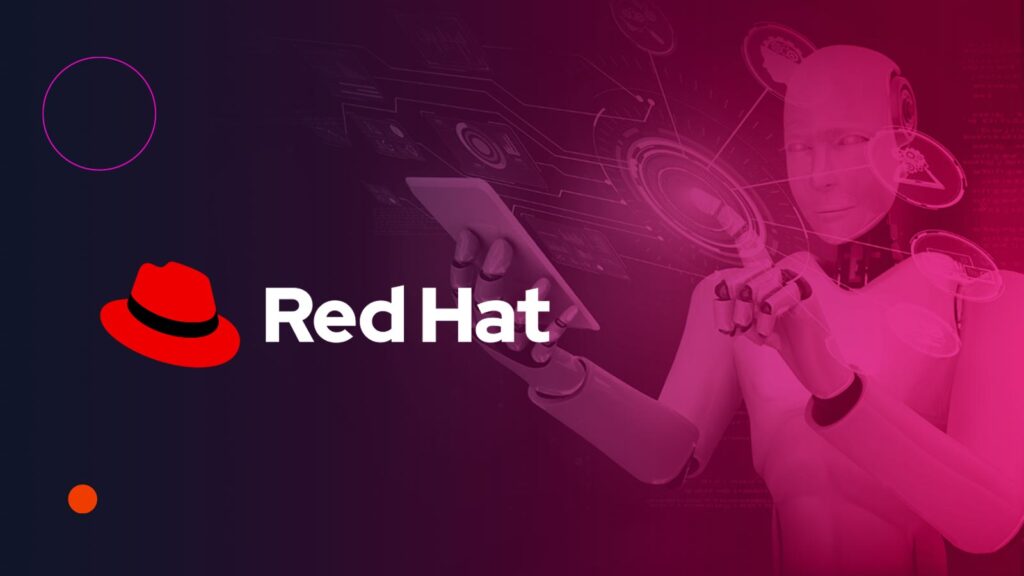Red Hat, Inc., the world’s leading provider of open source solutions, announced the general availability of Red Hat Enterprise Linux 9.5, the latest version of the world’s leading enterprise Linux platform. Red Hat Enterprise Linux helps organizations deploy applications and workloads more quickly and with greater reliability, enabling them to lower costs and more effectively manage workloads across hybrid cloud deployments while mitigating IT risks, from the datacenter to public clouds to the edge.
Cyber Technology Insights: ECS Partners With NSA Cybersecurity Collaboration Center
“Organizations continue to find themselves at odds with striking the balance between maintaining their Linux operating system environments and the workloads that they support, all while being stretched for time and resources. Making matters more complex is the proliferation of the cloud and next-generation workloads such as AI and ML.”
According to IDC1, “Organizations continue to find themselves at odds with striking the balance between maintaining their Linux operating system environments and the workloads that they support, all while being stretched for time and resources. Making matters more complex is the proliferation of the cloud and next-generation workloads such as AI and ML.” Further, “RHEL standardization increased the agility of IT infrastructure administration management teams by consolidating OSs, automating highly manual tasks such as scaling and provisioning, and decreasing the complexity of deployments. As a result, infrastructure teams spent 26% more time on business and infrastructure innovation.”
Red Hat Enterprise Linux 9.5 delivers enhanced capabilities to bring even more consistency to the operating system underpinning rapid IT innovations, from artificial intelligence (AI) to edge computing, and make these booming advancements an accessible reality for more organizations.
Driving stronger security and compliance management capabilities
Red Hat Enterprise Linux system roles are a collection of Red Hat Ansible Content in Red Hat Enterprise Linux subscriptions that automate everyday administrative tasks to help organizations provide more consistent configurations and workflows at scale. Red Hat Enterprise Linux 9.5 adds several new system roles, including a new role for sudo, a command-line utility in Linux, to automate the configuration of sudo at scale. This enables everyday users to run commands typically reserved for admins, with the proper guardrails to manage rules accordingly. Users with elevated privileges can implement sudo configurations securely across their environment more consistently using automation, helping the organization as a whole to reduce complexity across the business.
Increased platform support for confidential computing enables data protection for AI workloads and lowers the attack surface for insider threats. By preventing potential threats from viewing or tampering with sensitive data, confidential computing enables enterprises to have more opportunities to use AI more securely to review large amounts of data while still maintaining data segmentation and adhering to data compliance regulations.
The newly released Red Hat Satellite 6.16 introduces updates to improve functionality, efficiency, security and compatibility. Satellite 6.16 now supports installing the Satellite Server and capsules on Red Hat Enterprise Linux 9 and broadening operating system (OS) compatibility while enhancing compliance capabilities. It also saves time, storage and bandwidth by syncing individual content views to capsules. This reduces the footprint of content views and traffic between Satellite and capsules. Satellite 6.16 also adds container push functionality to support customers’ container-dependent workflows, enabling bootc containers to be stored locally and in a secure manner.
Image builder continues a “shift left” approach, which integrates security testing and vulnerability fixes early into the development process, by providing customers with pre-hardened image configurations, saving time and increasing security. It offers users the benefit of these built-in capabilities without being security experts; instead, they can focus on achieving their business goals.
Reducing complexity with automation
Red Hat Enterprise Linux management tools continue to simplify system administration, enabling organizations to automate manual tasks, standardize deployment at scale and reduce system complexities.
In addition, Red Hat Enterprise Linux 9.5 now offers new file management capabilities to the web console, allowing users to perform routine file management tasks without using the command line, such as browsing the file system, uploading and downloading files, changing permissions and creating directories.
Quicker hybrid cloud operations for app deployments at scale
Red Hat Enterprise Linux 9.5 continues Red Hat’s commitment to fueling container-native innovation at the platform level with the inclusion of and full support for Podman 5.0, the latest version of the open source container engine. Podman gives developers a powerful open source tool for building, managing and running containers in Linux environments. This major release introduces Podman farm build, so developers can quickly build multi-platform images on remote machines in a single command, enabling organizations to efficiently test and deploy applications across various platforms to reduce development time and improve portability.
Application streams in Red Hat Enterprise Linux 9.5 provide the latest curated developer tools, languages and databases needed to fuel innovative applications. Red Hat Enterprise Linux 9.5 includes PG Vector for PostgreSQL, new versions of node.js, GCC toolset, Rust toolset and LLVM toolset.
Additionally, Java Dev Kit (JDK) 11 reached its end of maintenance in Red Hat Enterprise Linux 9; Red Hat will continue supporting customers using it, and the packages will remain available. The new default JDK 17 opens up new features and tools for building and managing modern Java applications while maintaining backward compatibility to keep JDK upgrades consistent for applications and users.
Cyber Technology Insights: Cognigy Launches Agentic AI for Next-Gen Contact Centers
To participate in our interviews, please write to our CyberTech Media Room at news@intentamplify.com
Source – Businesswire




